Premium Only Content

Adorable Deaf Baby Smiles When Hearing Aid Is Switched On
Georgina Addison, is a beautiful baby as young as 4 months old, the little smiling one you will see in the images was born deaf, so she wears headphones to be able to hear the sounds in her environment. Her parents turn on their headphones every morning to say good morning to her and enjoy the beautiful smile her baby evokes when she sees and hears them every morning. You have to see it! It will be the most adorable part of your day, you will see her happy face and the sounds she makes of joy. This baby is definitely charming, we can see how the sounds and voices of parents influence the emotions of babies and newborns This is incredible!
Hearing problems are common in children and all over the world there are families who understand what you are going through. What's more, you don't have to feel helpless. With the right treatment, most children with hearing loss can hear again and grow normally. Even those with profound deafness can join the hearing world, go to mainstream schools, read and talk to their peers, talk on the phone and enjoy listening to music.
Hearing loss is the total or partial inability to hear sounds in one or both ears.
Approximately 2 to 3 babies per 1000 live births have some degree of hearing loss at birth. Hearing loss can also develop in children who had normal hearing when they were babies. Loss may occur in one or both ears and may be mild, moderate, or profound. Deep hearing loss is what most people call deafness.
Some cases of hearing loss are progressive (get worse over time), while others remain stable and do not get worse. There are also transient hearing losses, such as those that cause otitis in somewhat older children.
Most childhood hearing loss or deafness is present at birth. Half of these deafnesses have a genetic origin.
Other deafness is due to situations that have occurred during pregnancy or at birth: newborns weighing less than 1500 grams, who have had infections such as meningitis or infections during pregnancy (rubella, toxoplasma, cytomegalovirus) or with some malformations. These children are at higher risk for hearing loss.
Parents should observe the baby's behavior during the first few months of life in the face of sound stimuli. During the first two months of life, the child blinks, wakes up, or is frightened by loud, high-pitched noises; the mother's voice is able to soothe the child and pays attention to listening. Between the ages of 3 and 5 months of life, he directs his gaze and turns his head towards the sound source, and between the ages of 6 and 9 months, he is able to look for the source of the voice or sound, moving his head and body in order to be able to observe it. It is advisable to consult the pediatrician if it is thought that a child does not hear well.
The most serious consequence of deafness, if not detected in time, is the absence of language. A child who does not hear may have an apparently normal development until 18 or 24 months of age, in which a delay in language acquisition may be normal, so it may be overlooked that the child is deaf. The problem with late detection is that these children do not speak because they do not hear, so detection and treatment should be as early as possible for the child to develop language.
It is now widely accepted that the detection of hearing loss in children within the first month of life makes it possible to diagnose it before the age of 3 months and to start treatment in the first 6 months. In this way, important alterations in the child are avoided or minimized.
This is the moment a deaf baby smiled from cheek to cheek and squealed with delight when her dad turned on her hearing aid. Georgina Addison, who is four-months-old, was born deaf and had two hearing aids fitted when she was just a few weeks old. Every morning when parents Paul and Louise go to wake her up, they switch on her hearing aids and watch as she coos and smiles with delight.
This video was shot on the 5th December 2019.
-
 0:52
0:52
SWNS
6 days agoHow Americans are using AI to plan their vacations
361 -
 0:11
0:11
Jessklorman
5 years ago $15.81 earnedAdorable Baby Smiles In His Sleep
20.4K8 -
 1:00
1:00
shysummer
6 years ago $23.70 earnedNewborn Baby Smiles When Dad Plays Music On Phone
20K2 -
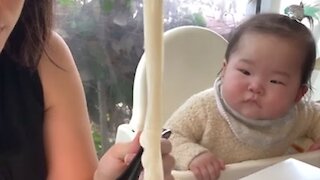 0:11
0:11
hungryoc
5 years ago $7.61 earnedAdorable Baby Can't Stop Drooling When Watching Mom Eat Noodles
331K3 -
 0:34
0:34
SWNS
6 years agoAdorable moment seven-year-old girl gets an advanced hearing aid
825 -
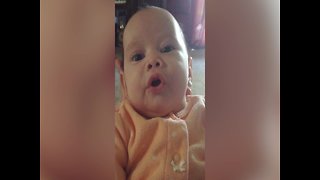 0:31
0:31
AFV
6 years agoBaby Makes Adorable Faces
10.3K2 -
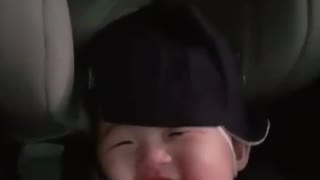 0:21
0:21
inseonjo
5 years ago $1.05 earnedSweet baby laughs in adorable manner
4.33K3 -
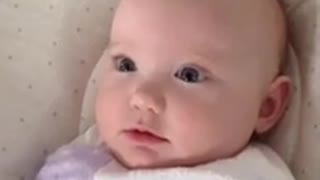 0:28
0:28
h3yPaula
5 years ago $45.02 earnedAdorable baby doesn’t think she’s beautiful!
64.4K4 -
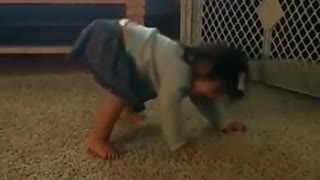 1:00
1:00
rupert09
6 years ago $4.34 earnedSpinning baby adorable falls over
3.22K1 -
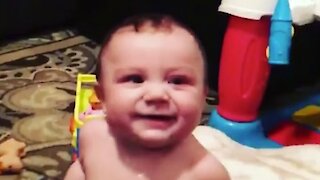 1:00
1:00
jangalangartworks
5 years ago $8.64 earnedBaby Has Adorable Case Of The "Giggles"
7K1